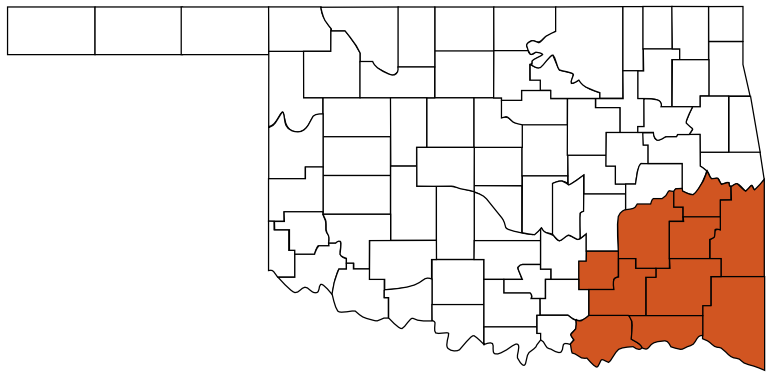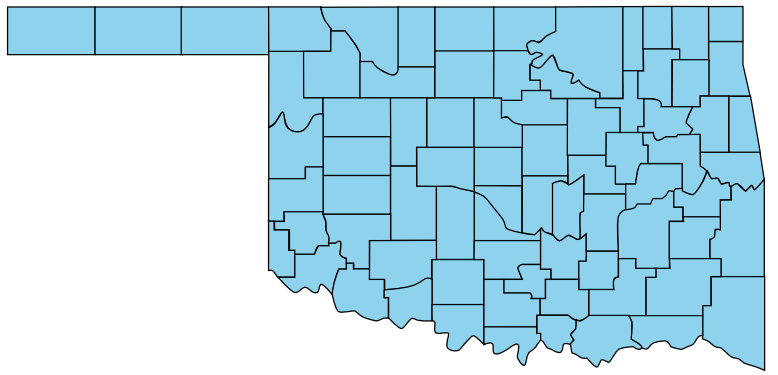Spiro Mounds
Spiro Mounds
Welcome to Spiro Mounds. The Interpretive Center has displays about the Caddoan Indians who created this important ceremonial complex between A.D. 600 and A.D. 1450. There is also an interpretive trail system that loops past all twelve mounds.
Each mound was created from layer upon layer of dirt carried in the baskets. Nine mounds were made as "platforms" for the primary leaders homes, two were for main religious buildings and one was to cover the burials of the leaders. Some of the mounds were looted by commercial diggers from 1933-1935 before they were explored by archaeologists from the University of Oklahoma from 1936-1941.
The Facility was opened to the public in 1978 and is administered by the Oklahoma Historical Society.
Interpretive Center Hours (Free Admission) - Wednesday thru Saturday 9:00AM to 5:00PM - Sunday, noon to 5:00PM
Each mound was created from layer upon layer of dirt carried in the baskets. Nine mounds were made as "platforms" for the primary leaders homes, two were for main religious buildings and one was to cover the burials of the leaders. Some of the mounds were looted by commercial diggers from 1933-1935 before they were explored by archaeologists from the University of Oklahoma from 1936-1941.
The Facility was opened to the public in 1978 and is administered by the Oklahoma Historical Society.
Interpretive Center Hours (Free Admission) - Wednesday thru Saturday 9:00AM to 5:00PM - Sunday, noon to 5:00PM
Location
Directions
Spiro Mounds Archaeological Center is located 2.5 miles east and 4.5 miles north of Spiro, Oklahoma on paved roads. Take Sh-9 east of Spiro to the Lock & Dam Road.
Regions
Maps
- 35.31414467278341, -94.57417488098145
- OpenStreetMap
- Google Maps
- Bing Maps
- Apple Maps
- MapQuest
Pictures
Notes
Wikipedia
Spiro Mound Group *** (added 1969 - Site - #69000153)
Also known as Spiro Site
Address Restricted, Redland
* GPS Coordinates from other source. - Image from Oklahoma Archeological Survey - The Spiro Mounds Site
Spiro Mounds is a state archaeological site run by the Oklahoma Historical Society and open to the public. It is located in Eastern Oklahoma, near the modern town of Spiro. It is one of the most important pre-Columbian sites in the United States.National Register of Historic Places
Spiro is the western-most outpost of the Mississippian culture that spread along the lower Mississippi drainage area and its tributaries. Like other Mississippian sites, it is composed of a number of large ceremonial mounds. The site was inhabited between about 850 and 1450 AD. It was the residence of powerful leaders who directed the building of twelve platform mounds and burial mounds over a 150 acre area.
Spiro is part of what archaeologists call the Southeastern Ceremonial Complex. The heart of Spiro is an oval plaza area formed by a grouping of nine mounds. Here the inhabitants carried out complex rituals, focused especially on the deaths and burials of great leaders. They made elaborate ritual objects for use in their ceremonies, often from exotic materials.
Craig Mound, one of the largest at Spiro and the only burial mound, was looted by artifact hunters in the 1930s. A small part of the mound had a cavity which allowed for almost perfect preservation of fragile artifacts like lace, fabrics, copper and conch shell. It appears to have begun as a burial chamber for an ancient ruler that was covered over with earth but never collapsed. Some of the artifacts looted at that time have been recovered and are among the finest examples of pre-Columbian art in North America.
Spiro was part of a vast Mississippian trading network that brought obsidian from Mexico, colored flint from New Mexico, copper from the Great Lakes, mica from the Carolinas, and conch shells from the Gulf Coast. The engravings of humans, animals, and geometric designs on the conch shells at Spiro are particularly well rendered and undoubtedly had profound symbolic significance. Spiro's ceremonial objects are some of the most sophisticated artforms ever found in the Mississippian region.
The Spiro people appear to have been speakers of one of the many Caddoan languages.
Spiro Mound Group *** (added 1969 - Site - #69000153)
Also known as Spiro Site
Address Restricted, Redland
- Historic Significance: Information Potential
- Area of Significance: Historic - Aboriginal
- Cultural Affiliation: Native American
- Period of Significance: 1499-1000 AD
- Owner: Federal
- Historic Function: Domestic, Funerary, Religion
- Historic Sub-function: Ceremonial Site, Graves/Burials, Village Site
- Current Function: Landscape
- Current Sub-function: Park
- Wikipedia - Spiro Mounds
- Oklahoma Archeological Survey - The Spiro Mounds Site
- Spiro Mounds Archaeological Park
- Oklahoma Historical Society - Spiro Mounds
- Spiro, Oklahoma
- Spiro Chamber of Commerce
- TravelOK.com - Spiro Mounds Archaeological Center Spiro Micro-Topography Study
- FT Cruiser — Spiro Mounds
* GPS Coordinates from other source. - Image from Oklahoma Archeological Survey - The Spiro Mounds Site


 LeFlore County
LeFlore County Choctaw Country
Choctaw Country Oklahoma
Oklahoma